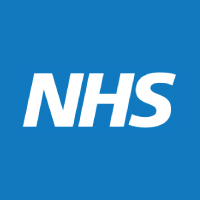University Hospitals of Morecambe Bay and NHS Lancashire North CCG – Using palliative care data
University Hospitals of Morecambe Bay and NHS Lancashire North CCG are using our End of Life Care Dataset to share patient information between hospitals in the North West.
Background
There’s been a strong history of good palliative care in the North West. The ambition is to provide gold standard end of life care to patients wherever they present but there was a fundamental problem. Necessary information was stuck in the GP record which meant the hospitals weren’t getting the information they needed.
What did we do?
We worked in partnership with the hospital and the CCG to implement the Detailed Care Record (DCR) and Specialist Datasets. They needed to implement the DCR before they could share the Electronic Palliative Care Co-ordination Systems (EPaCCS) record with the hospital.
The MIG shows relevant end of life information from the GP practices as a view inside Lorenzo, the hospital’s clinical system. The interoperability the MIG offers means the hospital didn’t have to replace their current software to have access to this information as it was integrated with their current system from the GP records.
How have they benefited?
Tim Reynard, GP clinical lead for Health Informatics at Lancashire North CCG, believes there are three main benefits;
1. Automatic alerts
The patient’s supportive care record is automatically shown as an alert; if there is one present. As only about 1% of patients coming into hospital have a palliative care record, doctors might not have checked whether one is present as a matter of course.
2. Delicate handling of sensitive information
Having access to a patient’s preferences enhances the patient experience by making healthcare professionals aware of what end of life care has been decided upon. It can be distressing for patients to repeat what their preferences are.
Also if the patient has deteriorated and is not able to state their preference, there is break glass functionally in the MIG, which means that consent couldn’t be given but a reason for accessing the record can be provided for an audit.
3. Spend more time with patients
Healthcare professionals having access to the same information for palliative care means that there is less duplication in data entry and will free up staff time to spend more time with patients.
“The nurses and team absolutely love it, it's extremely useful. Having this information available to colleagues undoubtedly empowers the patient.”
Tim Reynard, GP clinical lead for Health Informatics at Lancashire North CCG
What’s next?
The roll out of the project is being led by the palliative care team who will train the other teams in the hospital.
A&E and acute care are using the information at the moment and they want to share the data with other healthcare teams, such as out of hours (OOH).
Recent case studies
Contact us
To find out more about our solutions, get in touch.


